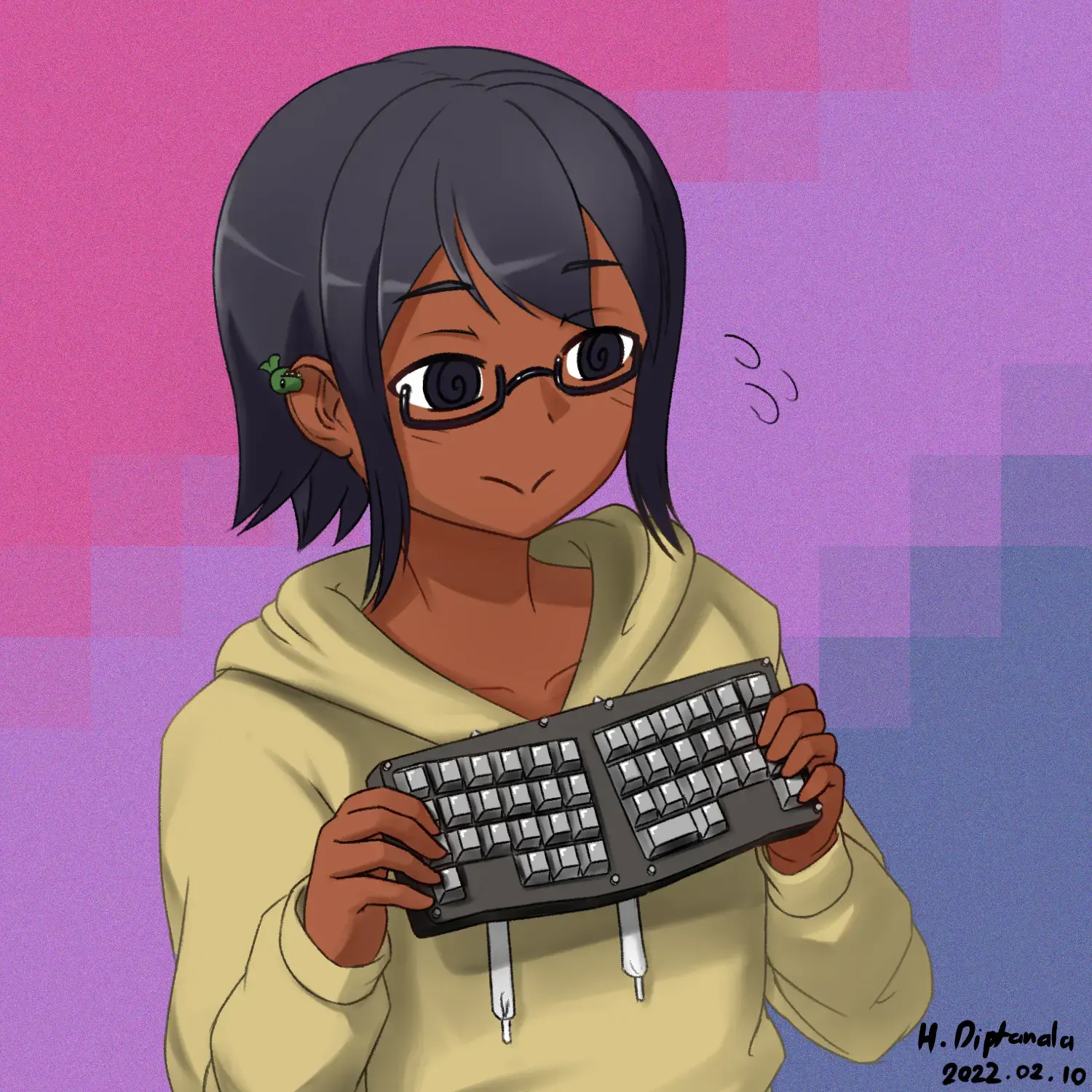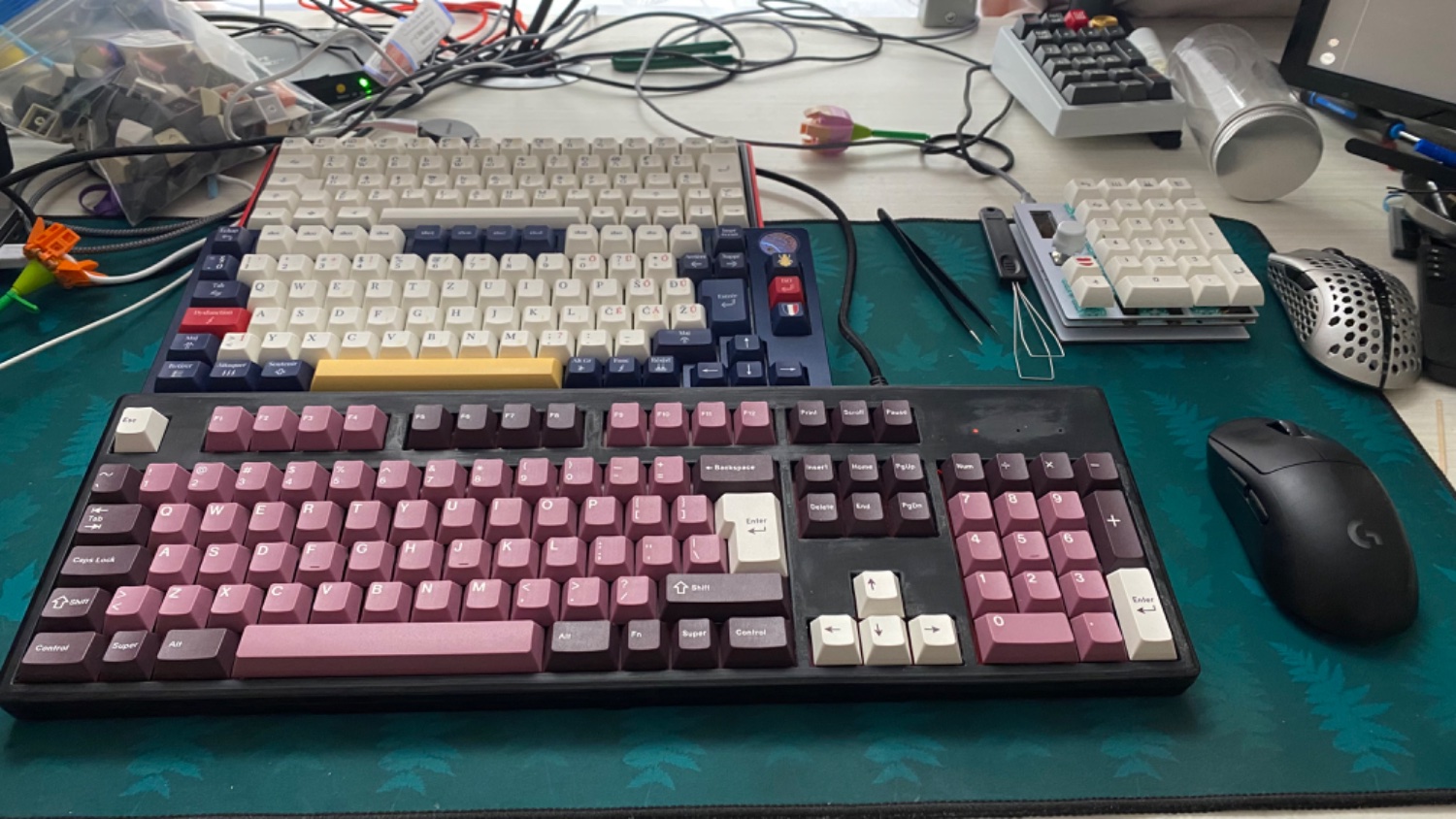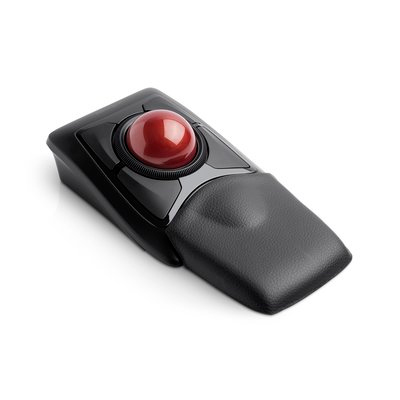



I’m not a true mechanical keyboard enthusiast. I mean I like a good keyboard for typing code, so I rolled with model-Ms in the 80s and 90s, then some expensive Cherry keyboard I only recently retired because it was utterly spent (and it was PS/2), and now I happily use a Wooting Two HE.
I’m so glad the mechanical gaming keyboard scene has developed so much: it means there’s a plethora of really excellent keyboards for the rest of us who don’t play games.
But something utterly baffles me: why are high-quality keyboards getting smaller?
There’s a lot more keyboards without the numpad and the block of middle keys - whatever they’re called - or with the middle keys reduced or squashed up awkwardly on the side, than full-size plain old 102- or 104-key layout keyboards. What’s wrong with the numpad? Isn’t more keys generally better?
Back in the days, I bought the original Happy Hacking keyboard because it kind of made sense to maneuver around in our server room with a small keyboard that took up less space. Typing on it drove me up the wall but it was convenient to carry. And I guess it was also good option for going to LAN parties with a smaller backpack. But other than that, for a keyboard that never leaves your desk, I don’t get it.
Are there other advantages to smaller keyboards? Genuine question! I’m not dumping on smaller keyboards: to each his own and if you’re happy with yours, more power to you. I’d just like to know why you prefer smaller.

Smaller keyboards:

This is it for me, I basically don’t use those keys daily and can access them via a function key when I rarely need them, so I’m gonna prioritise the aesthetics and compactness.

For me, having the symbols I use in a function layer is better than having them spread around, because I don’t have to move my hands as much.

Point 2 is absolutely subjective, though. Personally, I think a full size or TKL look a lot better than a compact. It’s too distracting seeing something “missing” from a traditional setup. Though, I also like to have my keyboard and mouse a good distance from each other and spread out, rather than close and centered in front of me.

A mystery for me, the numpad is essential and at least 60 percent of the nav cluster is in constant use. And I prefer the full keyboard look

The numpad Is essential or completely useless based on the PC usecase

PC players never use a spreadsheet or the calculator…?

Well of course no! Why should they, honestly! Do you really think a spreadsheet is a daily tool for the average person?

I didn’t say “daily” . If the number pad is there, you can always just… not use it. The opposite doesn’t exactly work.

Imagine you had to swim thru your bathtub to use the toilet every night. Sure it’s nice when you need to bathe, but more often you’re just going to want to skip over it to the thing you do more often—taking a leak. Rather than design your bathroom unergonomically, inconveniently, rearrange it to make more sense. You can buy separate numpads & place it somewhere else on your desk for when you need it, but keep the mouse closer to your keyboard.

Perfect answer

I literally don’t understand why you’re so passionately against something some people may want to use. If you don’t use it, fine, it literally takes up about 3 horizontal inches of desk space. And no, it’s not “a bathroom of water you have to swim through multiple times a day”. Also, I’m not about to buy a separate numpad to “keep the mouse close to my keyboard”. That’s absurd, what real-work benefits does that actually provide? You do understand some people do use it, yes?

Being “passionately against something” is my whole modus operandi.
If you use your mouse more than your numpad, you are doing your joints a disservice by not optimizing the ergonomics of your desk setup. I’m really glad we have a lot of options now to get anyone their custom setup unlike the ’90s & earlier. Recent years, separate numpads with good switches are easy to come by as well—heck, if you like mechanical switch over the alternatives, maybe you just want light linear switches for your numbers for your numpad so you can punch those numbers faster & without restraint while having a different switch an your main board.

Yeah, that seems to be the case

Chances are: they are there on smaller keyboards too. It might not be in the usual spot while also hidden behind a layer but its there.
This used to be a showstopper back when most of the available keyboards are not fully customizable firmware-wise. With the advent of QMK and VIA(L) on a lot of readily available keyboards, however, you can pretty much put any functionalities anywhere on any layer(s) you see fit.

The layer thing is really impressive, I’d actually love to have it on my normal huge keyboard. But I need the numpad available on the first layer, using a mouse is a must in my work

I ditched my numpad when I set up a layer that puts 456 right under jkl. My left hand hits the layer key (how much do you use both your left and right hands while using a numpad) so it’s right there and I don’t even have to move my hand. Doing so let’s me have the essential mouse closer to the boards.
It’s a full numpad, I’ve got the keys setup around it to put + - enter, etc there.
I’ll also add though, it’s an ortholinear so it’s also the same grid layout and a normal numpad.

Well damn that actually sounds good. How much time did it take you to get used to it?

The numpad usage was super quick, but my first (I’ve got a few and all follow that pattern) was a tented, split, ortho keyboard, the Iris. The ortho part for normal typing took me about two weeks or so to get up to normal speed. The split part has definitely helped my RSI though.
I definitely have tweaked my keymap for other special keys and media usage and such along the way. I’ve got the movement arrow keys under my sdf keys (for left, down, right, up on e) as well as of up and down on w&r so that hand doesn’t have to move either. Been living the ortho split life for 6 years now and I can easily type all day at work without any issues. (I’m a DevOps engineer so I do lots of typing, coding, console work all day long)

For a while at work I had a numpadless keyboard and a dedicated numpad placed right of my mouse (I’m right handed), I liked it a lot.

I wanted to try this but all keyboards I use have a numpad. The only thing that worried me was getting used to something you can’t have on every pc

Ironically I set it up so after getting used to notebook’s keyboards that were more centered relative to the screen

Hoo boy. This is an issue close to my heart about which I could talk for an unreasonable length of time.
I’m an accountant. Yes, spreadsheets. I always thought I you’d have to pry my numpad from my cold dead hands.
About 6 months ago I bought one of the saucy little mech boards of which you speak. A keychron k6. It was a whimsical purchase. It would make my thinkpad set up look better when I posted pictures to /r/thinkpad.
Turns out, I love using it so much that I can do without a numpad.
The core element to answer your “why not full size” question is simply that this little harlot fits in my backpack, where a 100% board would not.
Anyhow, I have a d-pad, and 2x function keys that can modify any key to whatever you want. So I don’t miss having any of the extra special keys. It took surprisingly little time to get used to.
On occasion, I do have to grind through entering a list of numbers, but it’s really not that often and doesn’t take that much extra time.

I do have to grind through entering a list of numbers
Have you considered a numpad layer? They’re great. All of the speed and convenience with none of the wasted space or extra arm movements.
I have a numpad for both hands on my Redox :-)


Woah that’s cool. Gonna check that out.

The K6 is not programmable out-of-the-box, but it seems some people have successfully installed QMK firmware on it (with caveats); https://github.com/CanUnesi/QMK-on-K6/
If you just want to try the numpad thing out, it might be easier to use something like AutoHotKey. Here’s an example of a script that uses CapsLock to toggle the numpad layer.
Of course, AHK scripts only work with the computer you’ve installed them to, whereas using programmable firmware will work regardless of which device you connect your keyboard to.

By the way, there is a !thinkpad@lemmy.ml community. Feel free to post there, we need content here on Lemmy. ;)


I don’t know but I feel the same. My main gripe is with media keys, because I don’t want Fn key combinations, but dedicated media buttons, which is increasingly rare. The most appealing keyboard I have laid eyes on recently is Das Keyboard which has a volume wheel, media keys and is full size, but it’s very pricey and not perfect still.

I liked having less space between my hands (left hand on the keyboard, right hand on the mouse). I also rarely use the numpad and other keys, so the negligible sacrifice was worth it for better ergonomics.

I have a 40% ortholinear kb because it’s more ergonomic. My fingers are never have to travel more than 2 keys away from home row. There are enough built in layers that I never feel like I’m missing a key. All keys are remappable. Beyond that I think it looks neat - folks always ask about it when they see it. When using a mouse and keyboard, my arms are kept at a reasonable distance apart (overall hands are closer together), so I can work or game longer without feeling like my shoulders or back are strained.

I switched to a TKL (tenkeyless) to reduce the distance between my hands when my right hand is on the mouse, and it feels so much better.
I got a programmable keyboard, so I remapped the keys around where my right hand rests to be the numpad keys when I hold the capslock key. That way I can still have the convenience of the numpad without having an actual dedicated numpad, although I’m still getting used to using it this way.

For most users/use cases, there isn’t a need for for so many dedicated keys - if they are prepared to learn layouts with multiple layers. There are several notable advantages: cost, portability, reduced footprint (keeping hands closer together when using mouse and keyboard), and reduced finger travel/stretch. These last two are good preventative measures for carpal tunnel.
I chose a 40% ortholinear keyboard specifically because I make heavy use of the numpad in my work. I keep the numpad on one of four layers and I find using it to be quicker and more seamless to transition to than when using a full sized keyboard. I only wish that more manufacturers made ortholinear layouts…

I like having more real estate for the mouse. If I need the numpad, I just reach for it.
I can live without the nav cluster. I can just Fn+arrows for pgup/dn/home/end. But can’t live without arrows.

I like having more real estate for the mouse
It seems many people who answered here also want a smaller keyboard to position the mouse closer to the centerline, or make room for the mouse.
Perhaps I should mention my own setup then: I don’t use a mouse 🙂 I use this - rather confusingly named - fabulous trackball: the Kensington Expert Mouse:

This is the best trackball ever. It’s been around for many years. People who like trackballs swear by it, and I can’t do without it.
The trackball is right up against the keyboard. So even though I use a full-size 104-key keyboard, the “mouse” is ergonomically placed and doesn’t require a lot of space.

How does a trackball hold up when playing vidya that requires a mouse normally? RTS, ARPG, Indie Rogue lites, FPS, basically anything that may require twitch, precision and traversal.
Well, I’m not much of a gamer. But I regularly play Quake1, 2 and 3/Arena - which are traditional WASD + mouse games despite being old, and I have zero trouble aiming quickly and accurately, even far targets that are single-pixels. The Kensington has a big ball that really helps for fine control.
Of course, there’s a learning curve, as with all trackballs. But once your favorite trackball becomes second nature, the (small) effort really pays off. I’ve used trackballs almost exclusively for 30 years and I’ve settled on the good old classic Kensington Expert Mouse, that’s a beloved favorite of musicians who lack desk real-estate in their MIDI setup, server room warriors like me, and just about anybody who wants a precise mouse without having to sacrifice space. Also, there is something to be said for always having the same controls at the same place all the time when you need to move the cursor: that too reduces hand fatigue.

What a coincidence. I just dusted off my quakeworld client yesterday. How does performing an unscripted RJ with a trackball compare to a mouse?
I’ve seen people swear by the ploopy. Have you had your hand on one?
How does performing an unscripted RJ with a trackball compare to a mouse?
I just tried it again in case there was some difficulty but no: it’s just fine. The thing is, this trackball is exaclty as comfortable and efficient to me as your mouse is to you. So really there never is any difference in terms of usability. You’ll never catch me being slower or less precise with that thing, because I’ve been rolling with one Kensington Expert Mouse or another since the late 90s 🙁
I’ve seen people swear by the ploopy. Have you had your hand on one?
I have not. Like I said, I’ve been totally satisfied with the Expert Mouse for decades, so I’ve never had any need to change.
But I did look it up and I can tell you rightaway what will drive you up the wall: it doesn’t have a scroll wheel. The Expert Mouse does (it’s a ring around the ball) and I don’t think I could live without it. Other than that, it sure looks interesting. I do like the open design.
EDIT: Actually nevermind: I see it has some button to use the ball as a scrollwheel. Interesting… I might just order one.

I’m much more a fan of the thumb trackball Logitech used to make:
https://www.newegg.com/logitech-910-001799/p/24W-001B-00008 as an example.
I’ve seen red or blue marble varieties. I think I’ve owned both, have bought like 5 of these over the years.
Currently using just a regular optical mouse, because it came with the keyboard, and is bound to the same usb plug, but I think I have one somewhere.

Gamers generally want more room on the desk so their mice can travel further without needing to be repositioned.
I love having a numpad for extra keybinds in MMOs and for number inputs for work, but I’ve since switched to a TKL and never looked back.
I still miss the numpad but that thing can be bought separately, and not smashing my mouse into my keyboard is a big plus.
Looking into upgrading to a Wooting 80HE once that launches; it’s like a TKL that wants to be questionably special, but given Wooting’s reputation I’d wager it’d still be better than anything else on the market.

I rather have my keys closer to the mouse. I don’t miss having a num pad at all.

I’ve recently built and am transitioning to a 50-key split-ergo keyboard. I code for a living so, a bit of getting used to, to be honest. The big advantage is in ergonomics and portability. Fewer keys means that fingers have less travel distance.

I’ve never used the numpad when I did have a full sized keyboard, and I want a smaller keyboard because the distance from the mouse and the WASD is smaller, which is more comfortable for me when gaming, but also when switching between typing and navigating with the mouse, the shorter distance is more pleasant.
I use a 75% keyboard because I don’t want a numpad, but I do want the arrow keys and F row without needing a function layer for them.

I was team numpad all the way, but then I received a 60% as a gift and I have to say, I’m quite impressed with it.
It’s pretty decent for gaming, you get more desktop real-estate for your mouse which is a huge plus. I’d also hazard a guess and say that the smaller size is more attractive for the average computer user.
Now that everything seems to take USB-C it’s really easy to swap out your board for something more suitable for your task. So if you really need a numpad, you can just swap your full size board back in.
Depending on your use case, you might be surprised how far you can get with a 60%. I thought the lack of arrow keys and F1-12 was really going to bite me, but I can use them easily enough for most cases - but not always. For instance, I wish I could still select text with Ctrl + Shift + arrow/home/end, but that’s out of reach now. But for 99% of my usage, it gets the job done.